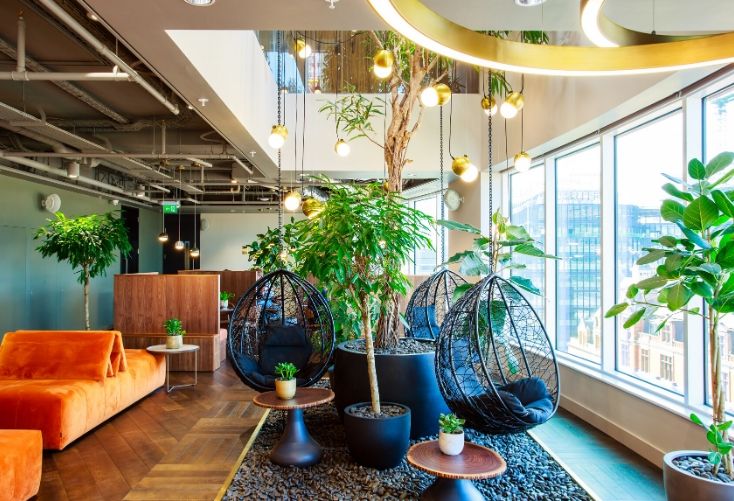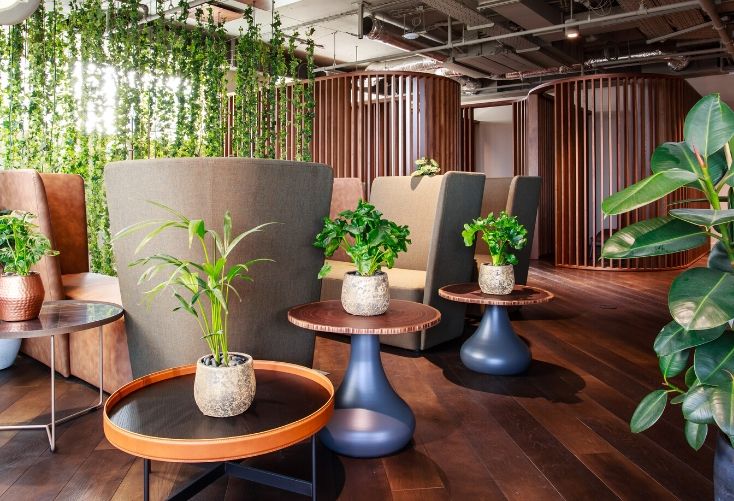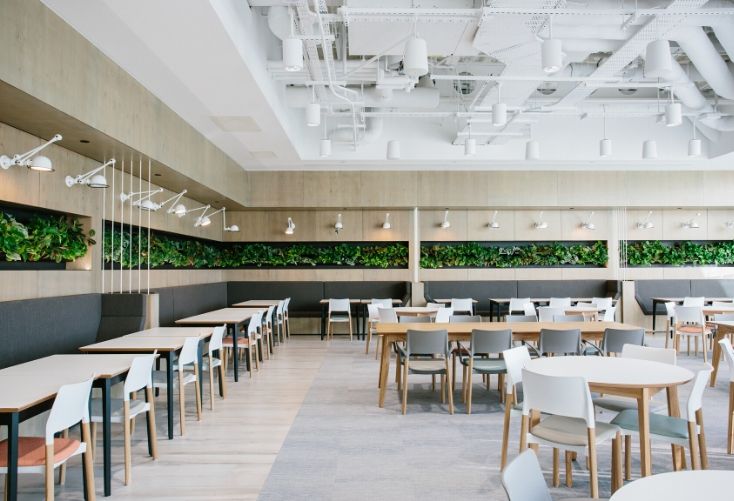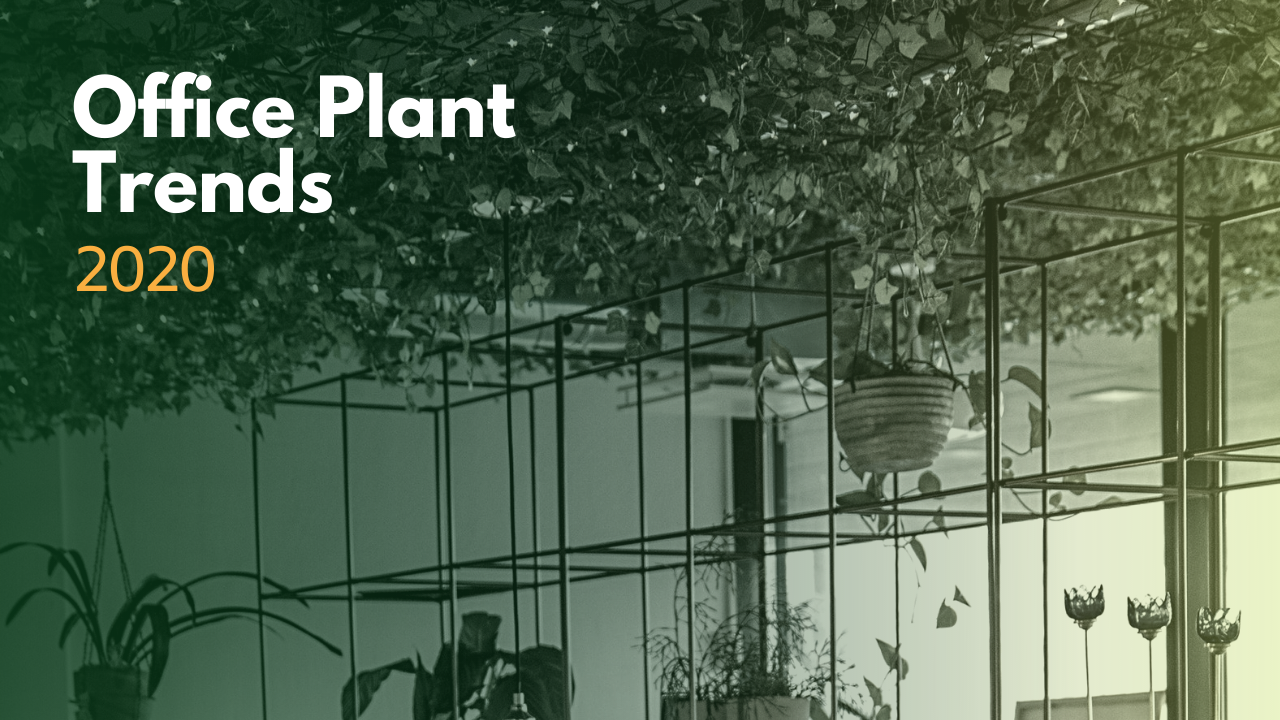- Biophilic design was hugely popular in 2019, and we’re set to see more plants entering the office in 2020.
- William Braid, MD of Plant Designs, offers five office plant trends for the year ahead.
- Among them, expect to see more variety in displays and elaborate ‘jungle-esque’ plant designs that mimic the wild.
Biophilic design is arguably the design concept that has the largest impact on wellbeing and productivity. It was a hot topic in 2019 and experts agree that it’ll be among next year’s top design trends too.
So now that it’s firmly rooted in flexible workspace culture, what can we expect to see?
We caught up with an expert in the field to get some hints as to what 2020 might have in store for biophilic design. Since getting a job in a plant nursery after leaving school, William Braid, MD of Plant Designs, now has 40 years of experience in the sector.
Plants Designs’ mission is to offset the effects of city living by making London’s workspaces green. The company’s team of experts provide bespoke biophilic designs for office interiors and exteriors.
From living walls to festive Christmas displays, Plant Designs can create something for every style, season and business.
“We run a rental model which is ideal for our clients,” explains Braid.
“As well as designing arrangements and helping companies choose what’ll look best in their space, we also look after the maintenance side of things.
“Renting allows for versatility and means we can change arrangements quickly in line with changing trends,” he adds.
Speaking of trends, let’s take a look at five for the year ahead…
1. Integrated aesthetic
“Plant designs that aren’t uniform but mimic the wild are highly sought after nowadays. Broad plants, tall plants… people want a mix.”

Plant Designs sourced 700 plants for Uncommon’s Liverpool street location, including this 6-metre tall Ficus alii which they handpicked from a Dutch nursery where it had been growing for 25 years.
2. Grouped plants
“More elaborate ‘jungle-esque’ plant designs are becoming increasingly popular as opposed to sticking a single plant in the corner of an office space.”

Uncommon Liverpool Street contains over 200 free standing displays as well as planting integrated with joinery. “The client wanted the planting to look lush and organic, so we chose primarily broad-leaved plants as well as some finer foliage to add texture.”
3. Biophilia-first approach
“Architects are factoring biophilia in at the design stage, from scoping out entire interior gardens to integrating cabinet tops that contain a range of foliage or just one plant type.”

4. Living walls
“Living walls are also proving incredibly popular, as are hanging plants — both live and replica.”

A moss wall at Uncommon Liverpool Street (image by Nic Kane)
For the areas that can’t be reached for regular aftercare, Plant Designs created displays from replica or preserved materials, such as this moss wall, together with over 70 square metres of replica ivy garlands.
Although not living, high-quality replicas add to the biophilic aesthetic of a space.
5. Understanding origins
“We’ve found that people are really interested in finding out more about the origins of plants as well as their benefits, which is why we offer guided tours of our showroom to clients who want to know about where the plants come from and their origins.”

Plant Designs’ Farringdon showroom
“In terms of client trends, we’re seeing that organisations in the charity sector are starting to embrace plant design as a way of enhancing the overall wellbeing of their employees,” says Braid.
“In 2020, wellbeing will take precedence over aesthetics, and we don’t think that’ll change anytime soon.”
Follow @plandesignsldn to keep up-to-date with the latest office greenery trends.


 Dr. Gleb Tsipursky – The Office Whisperer
Dr. Gleb Tsipursky – The Office Whisperer Nirit Cohen – WorkFutures
Nirit Cohen – WorkFutures Angela Howard – Culture Expert
Angela Howard – Culture Expert Drew Jones – Design & Innovation
Drew Jones – Design & Innovation Jonathan Price – CRE & Flex Expert
Jonathan Price – CRE & Flex Expert













